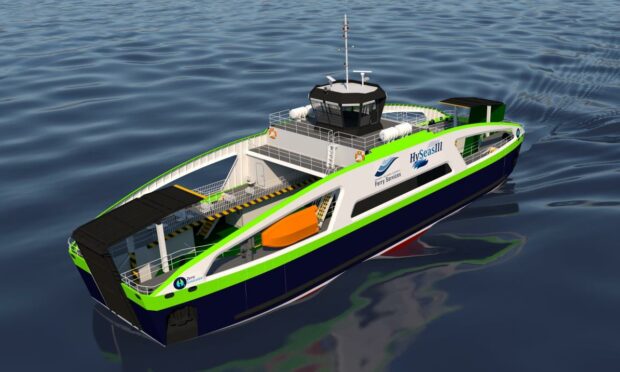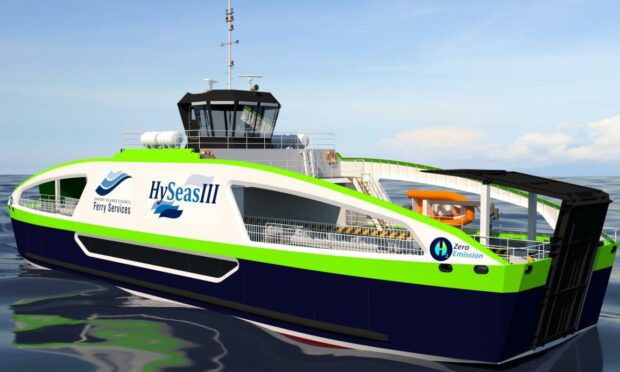The first drawings of a Scottish led hydrogen-powered ferry project have been completed.
Orkney Islands Council, Caledonian Maritime Assets Limited (CMAL), St. Andrew’s University and several European organisations have teamed up to build Europe’s first seagoing ferry powered by hydrogen fuel cells.
Dubbed the ‘HYSEAS III’ project, the venture is being funded by a European Union programme of the same name.
Artists drawings show off what the ferry will likely look like.
As a doubled ended passenger and car ferry, the craft will have the capacity for 120 passengers, 16 cars and two trucks.
It has been designed to operate on the route between Kirkwall and Shapinsay in Orkney, where hydrogen fuel is generated through wind power.
It will be capable of operating at other ports where hydrogen could become available in the future.
Plans for the future
The designs by AqualisBraemar LOC Group show how a vessel purely powered by renewable energy may look and will provide a blueprint to the further development of zero-emissions ferry travel.
The next stage of the project will see the groups seek feasibility approval of the designs from the DNV Classification Society.
Testing is currently underway in Bergen, Norway to demonstrate the complete fuel cell propulsion and assess power and fuel capacity requirements.
Once designs are complete in March 2022, CMAL will be on the lookout for funding partners.
John Salton, fleet manager and projects director at CMAL, said: “We know that maritime transport remains the UK’s largest emitter of greenhouse gases, and our Hyseas III project will pave the way for the first seagoing vessel using purely renewable energy.
“Seeing the concept designs brings the project to life.
“The vessel design is broadly based on our larger loch class vessels, which are double-ended.
“Once the designs are approved, we will move to the next stage of the project, which will see the build of the engine to be used in feasibility studies.
“The maritime industry has a key role in the global fight for climate change, and this project marks a step toward emissions-free marine transport.”

